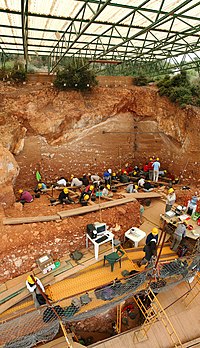
Photo from wikipedia
Abstract Pollen grains are carriers of allergens, causing severe symptoms to hay fever sufferers. Due to annual variability in pollen levels, there is a need to develop a precise forecasting… Click to show full abstract
Abstract Pollen grains are carriers of allergens, causing severe symptoms to hay fever sufferers. Due to annual variability in pollen levels, there is a need to develop a precise forecasting model that can accurately predict levels of annual airborne pollen for use by patients and medical personnel. In a previous study, we developed and tested a new pollen prediction algorithm based on past meteorological conditions in a flat region. In this study, we analyzed pollen samples (spring 1997–2016) and meteorological data (summer 1991–2015) from nine Swiss cities, using the algorithm to test its applicability in a mountainous region. However, we found variations in model applicability (r2 and RMSE) among the nine observation sites. Based on considerations of topographical influence on the spatial representativeness of airborne pollen data, we then investigated the relationships between these indices and topographical features at varying spatial ranges. The results suggested that the applicability of the algorithm to annual total airborne pollen forecasts can indicate the spatial representativeness of observed airborne pollen concentrations: r2 and RMSE reflected deviations in airborne pollen concentration caused by dispersal conditions at local and meso-scales, respectively. At higher-altitude monitoring sites, the local spatial representativeness of airborne pollen declined due to the influence of local topography-driven climate. On the other hand, dispersal conditions in the atmospheric boundary layer may deteriorate the meso-scale representativeness of airborne pollen at monitoring sites with higher terrain complexity. This study provides a reference approach to determining the spatial representativeness of airborne pollen data by applying the pollen forecast algorithm.
Journal Title: Atmospheric Environment
Year Published: 2019
Link to full text (if available)
Share on Social Media: Sign Up to like & get
recommendations!